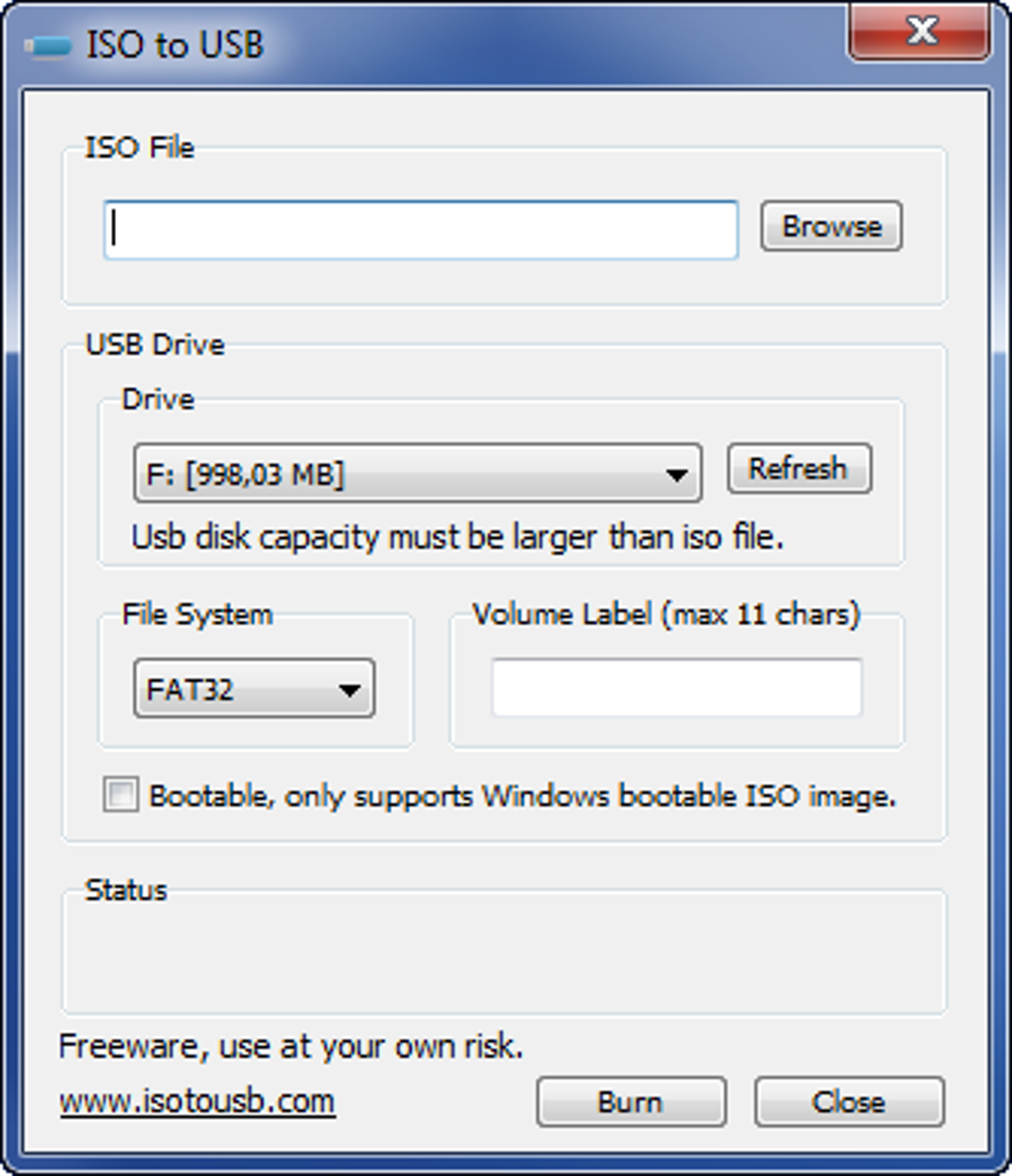

- Windows iso to usb how to#
- Windows iso to usb install#
- Windows iso to usb windows 10#
- Windows iso to usb Pc#
If the QEMU guest VM starts successfully, ie, you get no error from the qemu-system-x86_64 command, you can connect to it using a local VNC Client on your desktop. $ sudo firewall-cmd –zone=FedoraServer –add-port=5900-5910/tcp –permanent Ideally, you should only open as many ports as you need. The following opens a range of ports to allow you to connect up to 11 running VM Guests. In our example, we ask QEMU to use VNC port :0 which maps to port 5900. The default port for VNC is 5900 + the -vnc. Note: If you are connecting remotely to the Linux system, you may need to open the firewall to allow the remote VNC port(s). The following uses our USB device (/dev/sde): $ qemu-system-x86_64 -hda /dev/sde -m 4G -machine pc,accel=kvm -enable-kvm -vnc :0 -daemonize We simply provide the USB device as the boot device and supply some Memory.

Windows iso to usb install#
If you don’t have QEMU/KVM installed, you can install the package group using: $ sudo dnf install we can create a new temporary Guest Virtual Machine without network and disks. It is a good idea to verify the USB drive is bootable before you reboot and find out so you don’t loose that time. The target device should be bootable now Step 4: Verify the USB drive You may now safely detach the target device Resetting workaround to prevent 64-bit systems with big primary memory from being unresponsive during copying files.
Windows iso to usb Pc#
Installing custom GRUB config for legacy PC booting. Installing GRUB bootloader for legacy PC booting support. 13:59:12 (1.48 MB/s) - ‘/tmp//uefi-ntfs.img’ saved ĥ24288 bytes (524 kB, 512 KiB) copied, 0.0333775 s, 15.7 MB/sĪpplying workaround to prevent 64-bit systems with big primary memory from being unresponsive during copying files. Wait 3 seconds for block device nodes to populate.Ĭluster size has been automatically set to 4096 bytes. Making system realize that partition table has changed. dev/sde: calling ioctl to re-read partition table: SuccessĬreating new partition table on /dev/sde. dev/sde: 2 bytes were erased at offset 0x000001fe (dos): 55 aa Wiping all existing partition table and filesystem signatures in /dev/sde. WARNING! All data on the USB key will be erased $ sudo woeusb -target-filesystem NTFS -device 5_release_svc_refresh_SERVER_EVAL_圆4FRE_en-us.iso /dev/sde Additionally, we will erase and use the entire capacity of the USB key (/dev/sde), then write the contents of the ISO (5_release_svc_refresh_SERVER_EVAL_圆4FRE_en-us.iso) to it. Since the size of the ISO is larger than the default FAT32 can handle, we need to specify NTFS file systems. I’ll use the woeusb command line rather than the woeusbgui since I’m using a remote linux server without the desktop. Install WoeUSB using the Fedora package repository: $ sudo dnf install WoeUSB Step 3: Using WoeUSB to create bootable Windows USB device
Windows iso to usb windows 10#
WoeUSB is a free and open source application for creating Windows 10 bootable USB. Go to the Microsoft website and download the Windows ISO from the links provided:
Windows iso to usb how to#
In this tutorial, I am going to show you how to create a Windows Server 2019 bootable USB in Linux, though any Windows version will work.


 0 kommentar(er)
0 kommentar(er)
